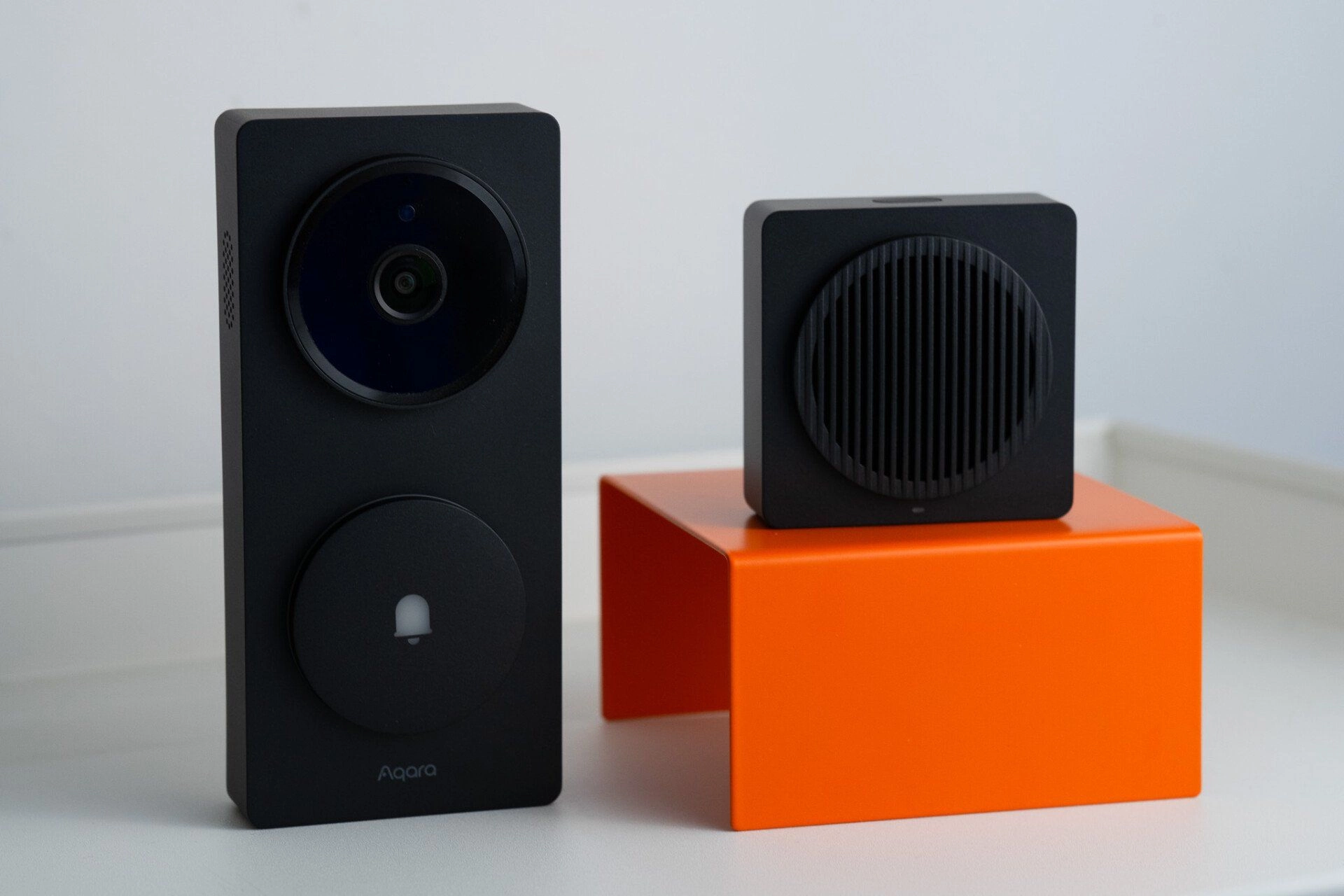Aqara, the notable Matter smart home device maker, recently expanded its smart-home lineup with the release of the G410 Doorbell. This new product integrates Matter capabilities directly into a smart doorbell, serving also as a built-in smart home hub. Combining core doorbell functionalities with advanced home automation features, the G410 aims to become a versatile choice for smart-home enthusiasts.
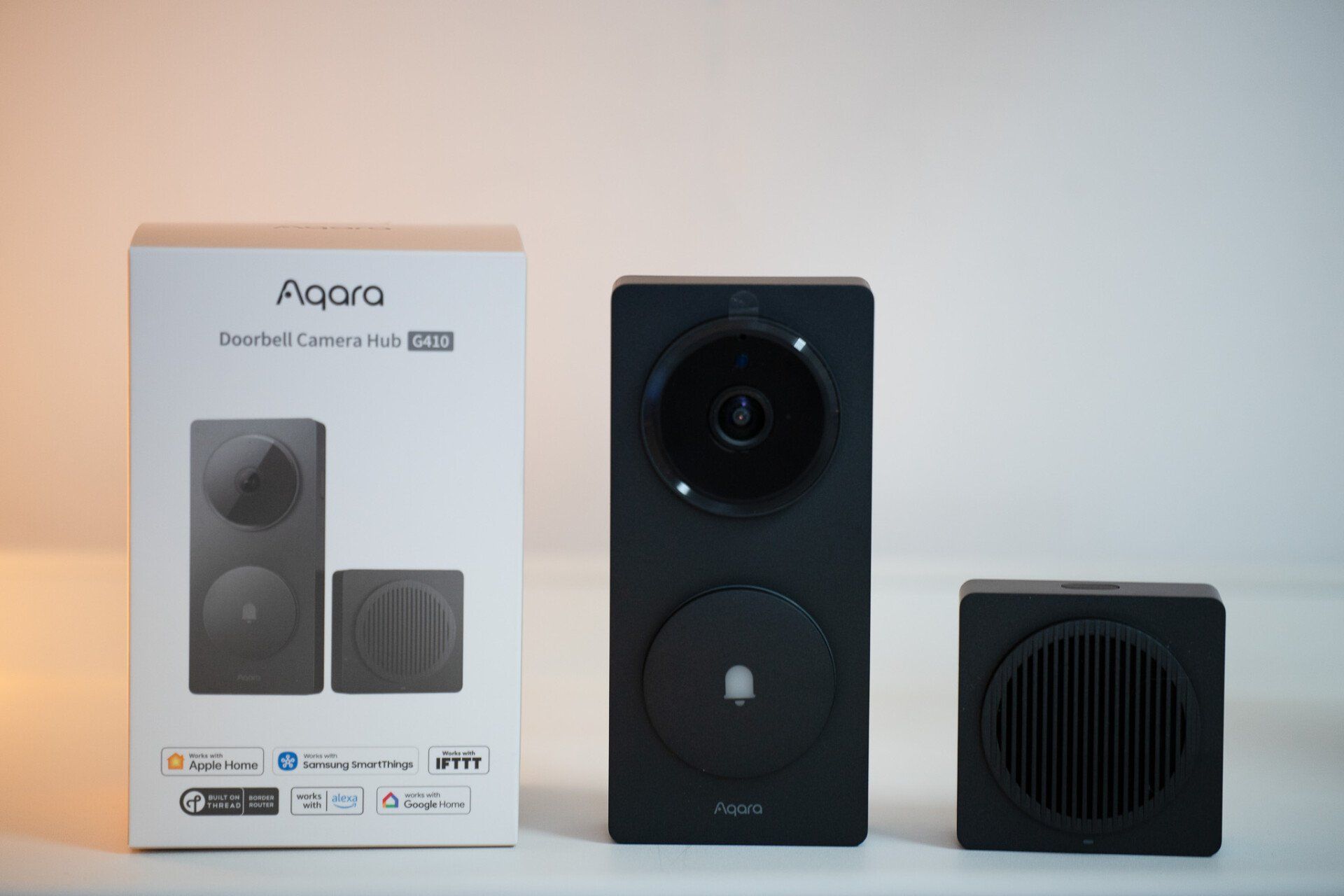
Aqara Doorbell sets a high baseline for this category, with reliable connectivity, responsive video streaming, strong facial recognition capabilities, and impressive battery life alongside flexible installation options. Its built-in Matter controller, bridge functionality, and Thread Border Router further help you integrate Thread devices, both within Aqara’s ecosystem and third-party devices.
This review will focus on the G410 doorbell’s core features, including its camera performance, hub features, and Matter capabilities.
TL; DR
For:
-
Sleek design
-
Flexible installation
-
Long battery life
-
Clear 2K image and night vision support
-
Rich on-platform features
-
Built-in Zigbee gateway and Matter components
-
Open Thread Border Router
-
Local storage and RTSP support
- Stable connectivity
Against:
-
High price tag
-
Certain features require a subscription
-
Less powerful in AI compared with Ring and Nest
- Matter features are buggy sometimes
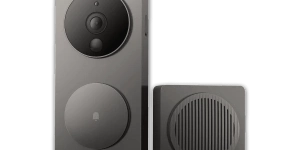
Doorbell Camera Hub G410
The Aqara Doorbell Camera Hub G410 is a 2K-resolution smart doorbell that doubles as a Matter-ready smart home hub, offering enhanced person detection with mmWave technology and broad ecosystem compatibility.
Sleek design and flexible installation
The G410 Doorbell, much like its predecessors, follows a modern and low-key aesthetic, easily blending with most contemporary door styles. It is available in two colors – light and dark – allowing users to match their décor easily.
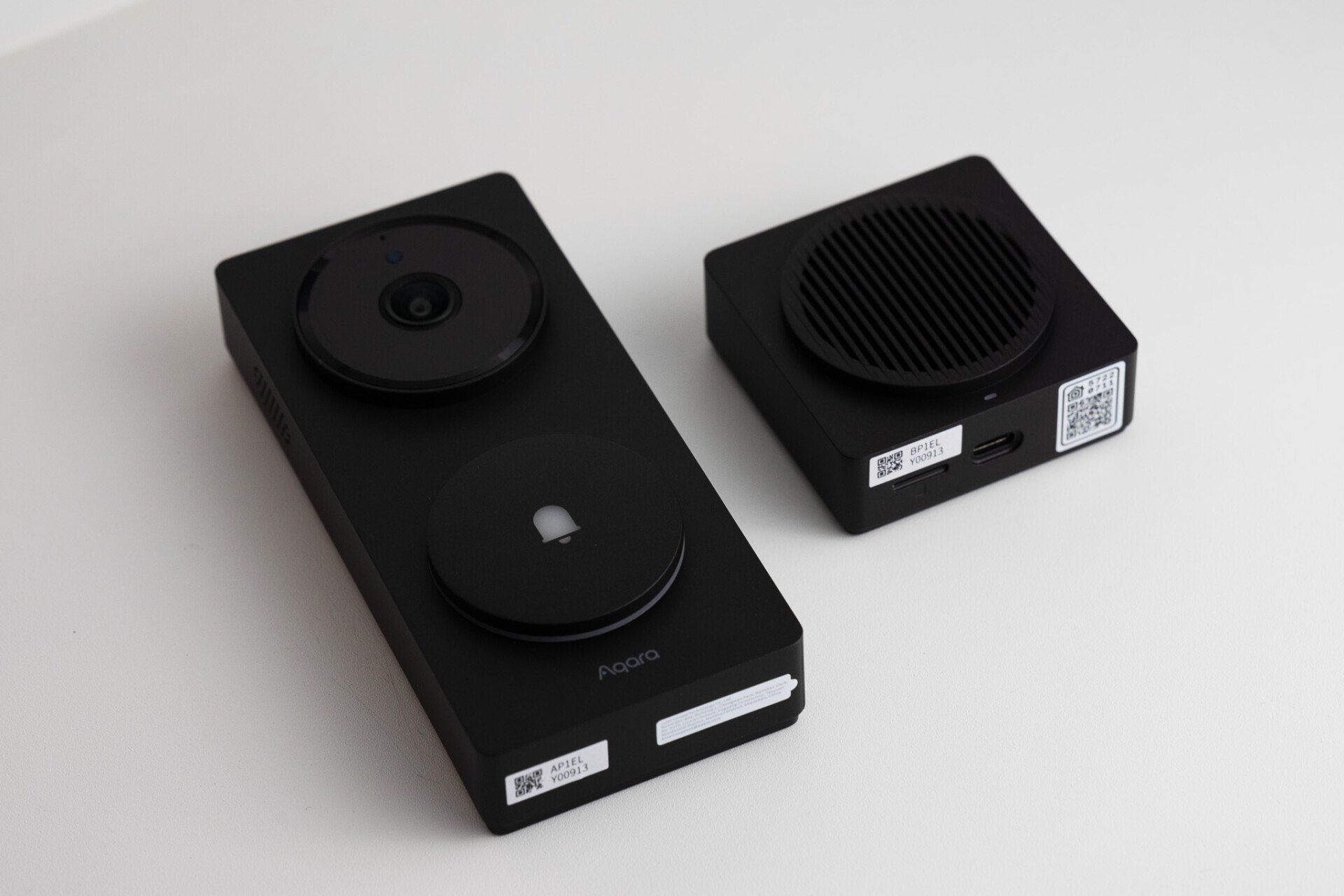
This doorbell system consists of two primary components: an outdoor camera-equipped unit with a push button, and an indoor chime unit. Installation is quite flexible. The camera part offers two installation methods – either attaching the device with 3M adhesive stickers and powering it via six AA batteries or permanently hardwiring it with DC power and installing it securely using provided screws.
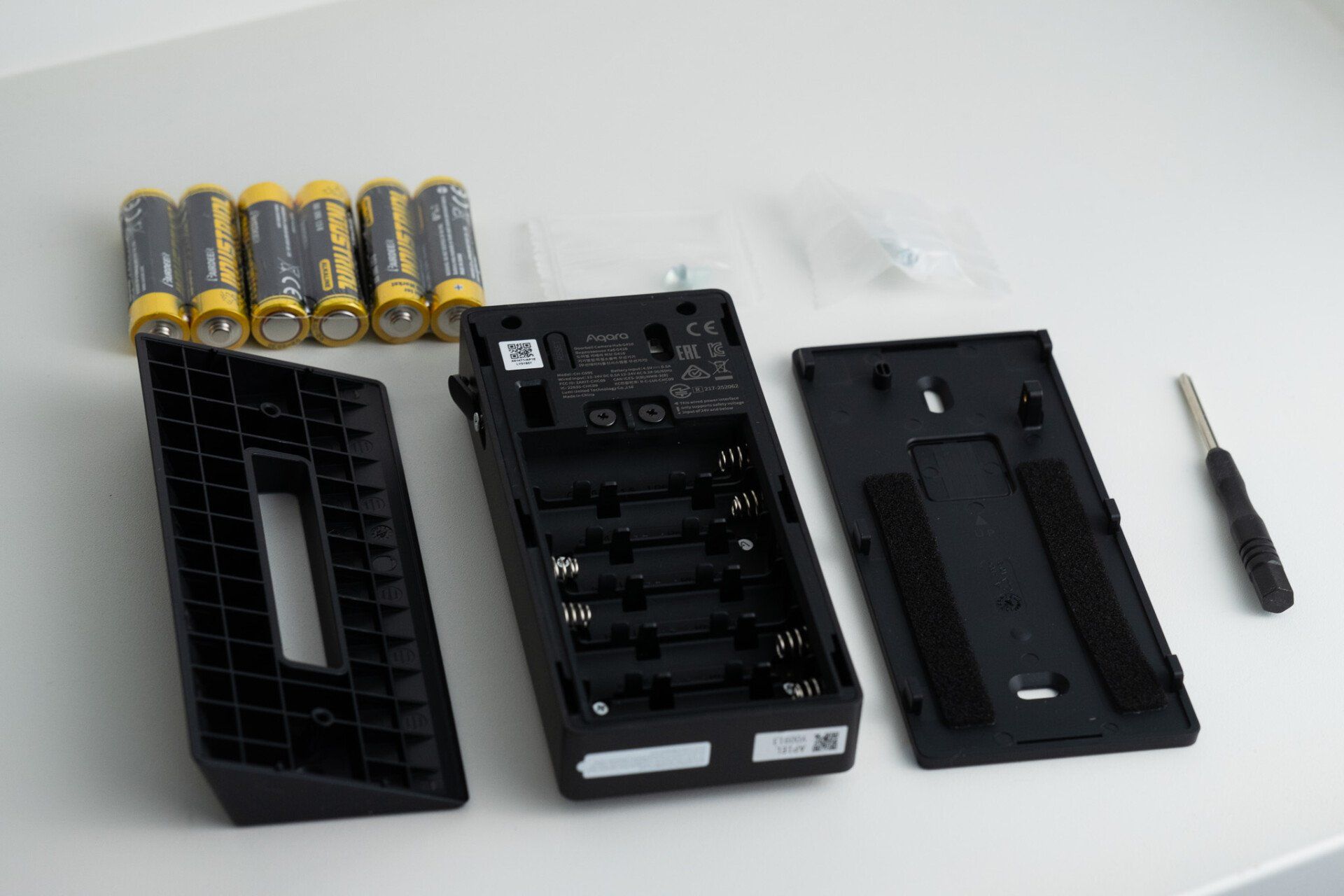
In case your preferred installation spot is not directly facing the entry area, the package includes an optional angled mounting accessory. This allows easy and accurate camera positioning for the best viewing angle, which is notably convenient.
There’s a small inconvenience for battery replacement: a screw located at the side has to be removed first. Though it slightly complicates battery changes, it improves safety by preventing unauthorized or accidental battery removal.
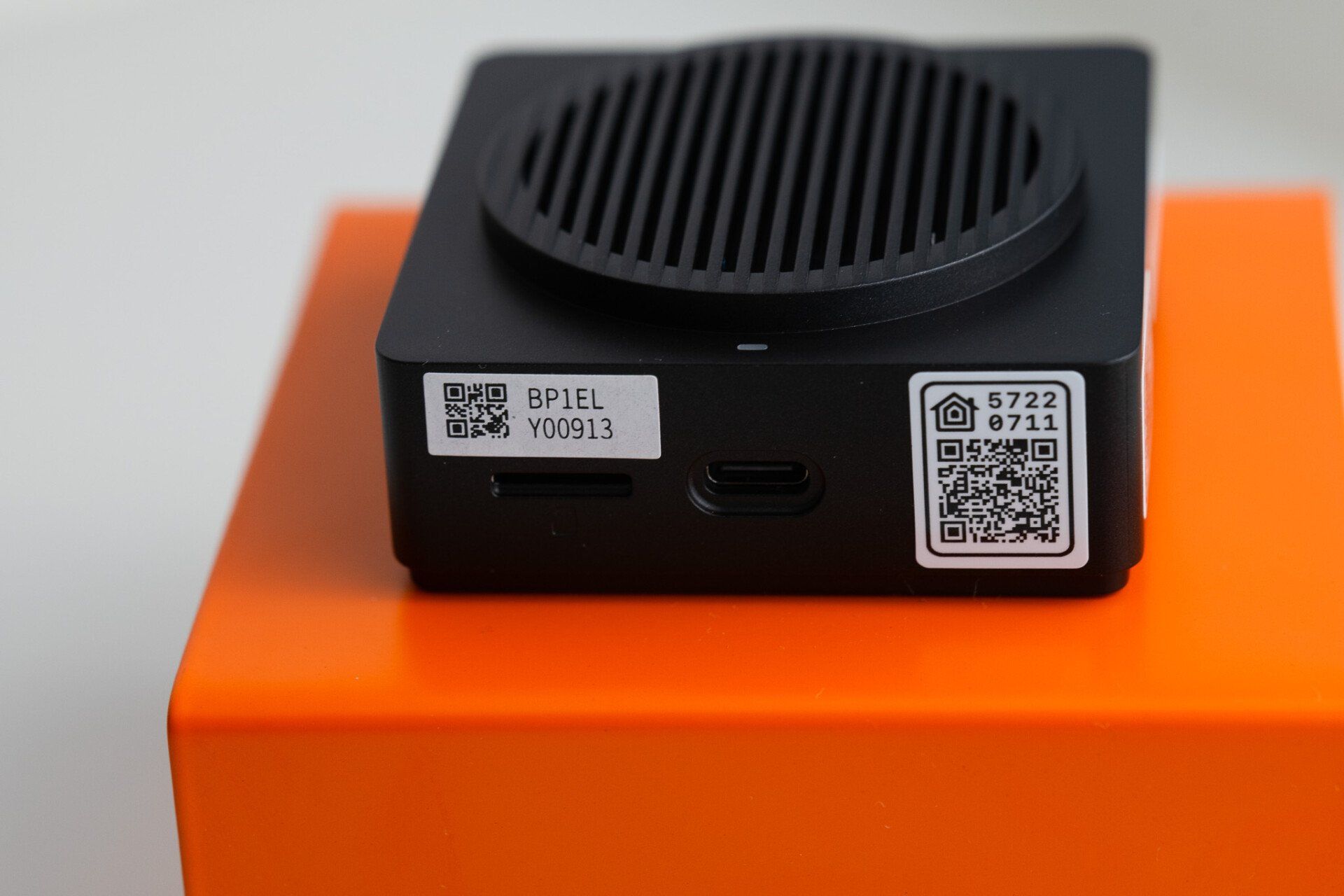
The indoor chime unit, powered through USB-C, has a compact design so you can easily place it indoors without hassle. Aqara recommends keeping this chime close to the outdoor unit for optimal performance. However, during our tests, the indoor chime performed reliably even when positioned behind a metal door at a distance of under two meters.
Additionally, the supplied power cable for this indoor unit is flat and soft, making it easy for you to discreetly route or conceal – either behind furniture, under books, or within home accessories such as decorative trays or keyholders.
A solid doorbell option
As a dedicated smart doorbell, the G410 provides nearly everything users typically expect. Core capabilities include smooth streaming of live video feeds, integrated facial recognition, event histories, and support for advanced automation scenarios. Moreover, it benefits from Aqara’s already mature ecosystem, bringing a wealth of customizable configurations, automations, and integrations.
The device impressed me with fast, reliable video streaming, even while operating solely on battery power. There’s virtually no lag in playback during my tests, and streaming audio quality is equally good. Image quality is quite robust overall, capturing clear visuals even under relatively low-light conditions. Night-vision mode guarantees clear and detailed monochrome images throughout the night.
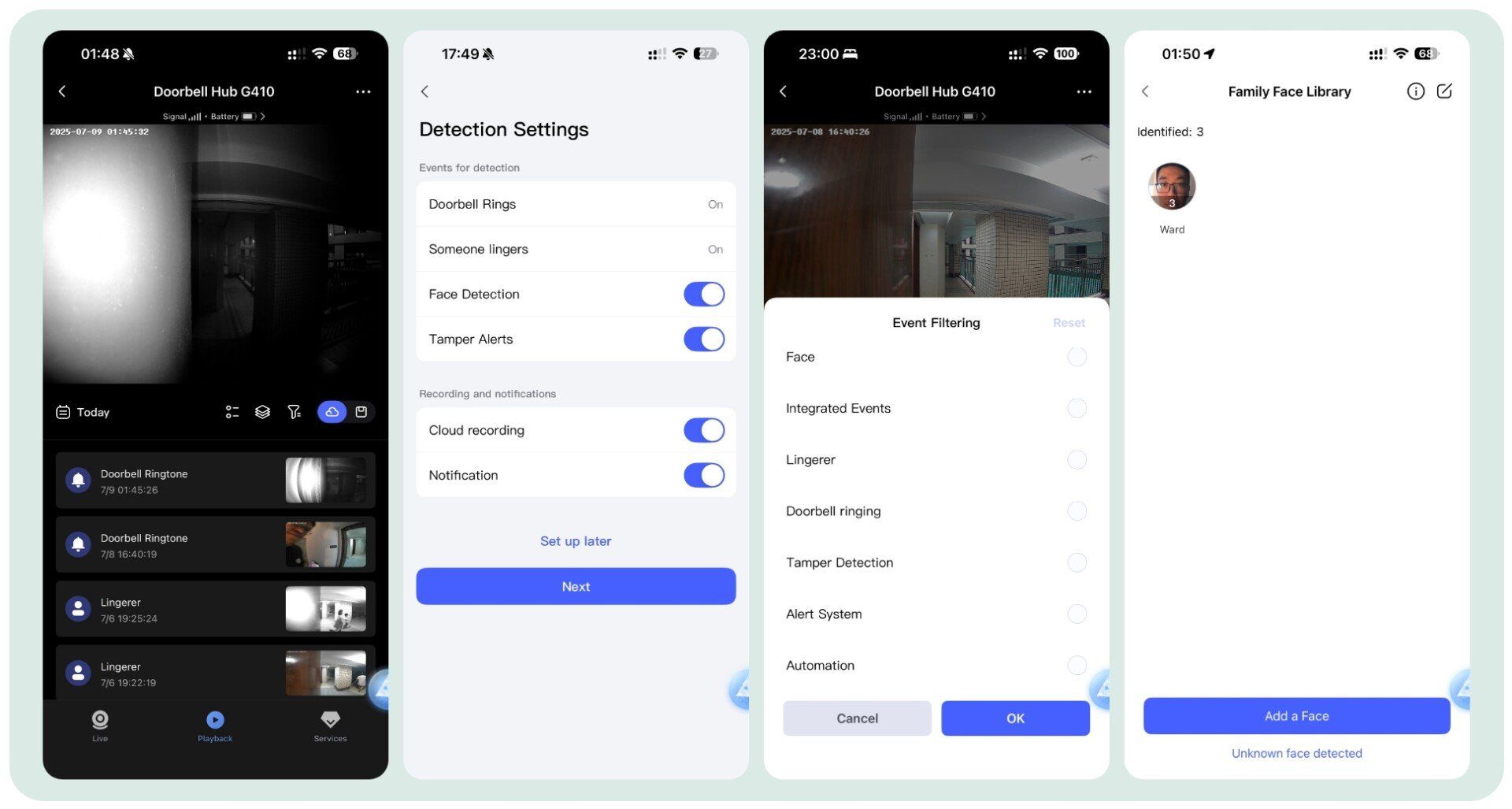
The camera features an ultra-wide fisheye lens (175-degree viewing angle), providing excellent coverage of your front door. My test installation placed the device in an apartment door located at the corner of a hallway, partially obstructed by a nearby doorframe. Despite this challenging positioning, the camera was still capable of clearly capturing the entire area.
The G410 Doorbell has a mmWave presence sensor that, when set to an event-triggered recording scenario, reliably activates whenever people pass through its viewing area. During our two-week evaluation period, it consistently woke up, captured short video clips, saved these events into the device’s history, and promptly sent snapshot notifications. The battery performance was notably impressive, holding more than 80% charge with frequent activations (over ten per day).
When set to medium sensitivity, the detection was seldom falsely triggered, performing consistently well. One small limitation we noted: people briskly walking by won’t often have their full faces captured clearly. However, when one stops near the door or presses the doorbell button, it captures clear facial images. These faces are logged and can be named within Aqara’s app, allowing personalized and advanced automation possibilities.
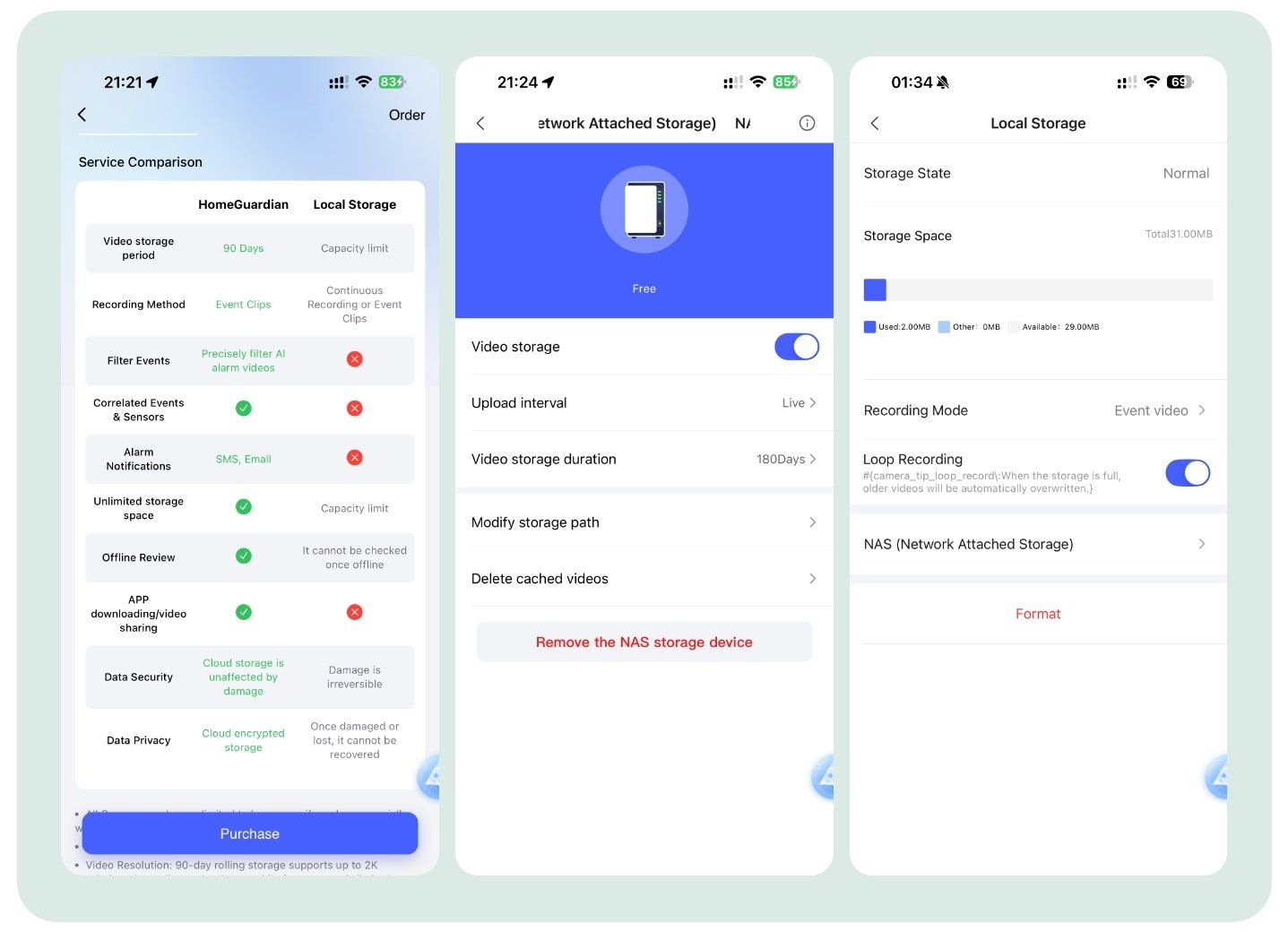
In terms of event management, Aqara provides AI-assisted filters to categorize and sort different events, prioritizing key recordings to streamline viewing. Users can choose from cloud subscription services (including enhanced AI features and cloud storage), local microSD storage, NAS backup options, or integration with Apple iCloud storage. However, one notable shortcoming is that RTSP streaming is disabled when operating solely on battery power.
Integrated Matter features
Like Aqara’s recent Hub M100 release, the G410 doorbell doubles up as a Matter Controller (often known as a Matter Hub), a Matter Bridge, and a Thread Border Router, greatly enhancing its value and versatility.
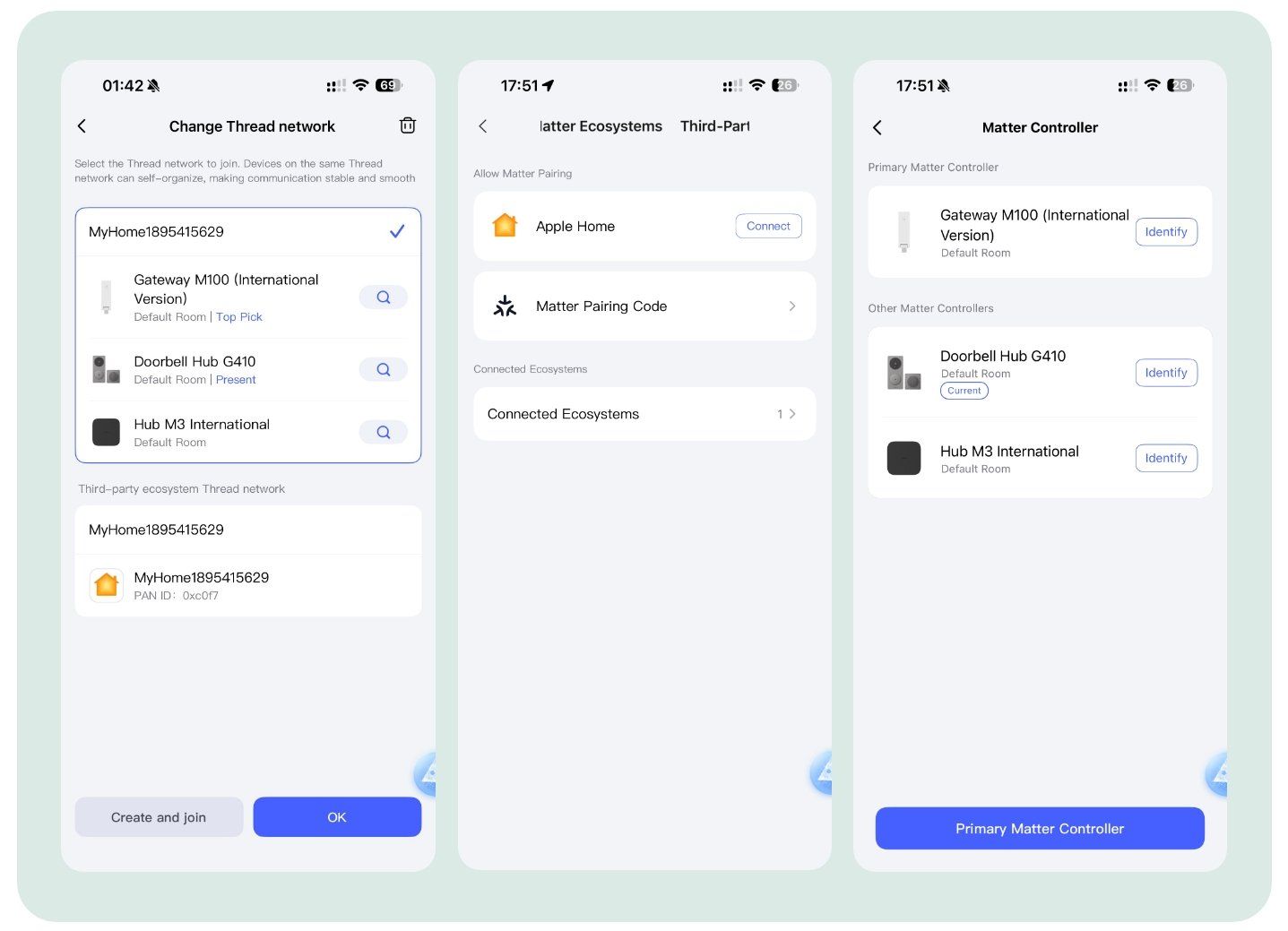
Leveraging its Matter Controller feature, the G410 seamlessly integrates third-party Matter devices into Aqara’s ecosystem without significant limitations. Aqara currently supports more than 50 distinct device types, making its Matter compatibility one of the most extensive on the market, comparable to platforms such as Home Assistant and SmartThings. However, certain Matter devices with manufacturer-specific features might lack full support on Aqara’s platform.
Setup reliability for Matter devices using Aqara products has improved a lot since the brand’s early launches. Nevertheless, compared to larger and more established smart-home ecosystems, complex network scenarios would lead to set up issues or connectivity challenges.
Another significant advantage of Aqara’s Matter implementation is its support for integrating third-party Matter bridges from brands like Hue or Ikea. Aqara’s diverse sensors and controllers gain additional capacity through such bridges, creating richer automations. For instance, a Hue lighting setup can be effectively controlled using Aqara’s Cube remote, or Aqara’s advanced FP2 presence sensor (with zone detection) can be leveraged for powerful presence-triggered lighting automation.
The Matter integration is fully bidirectional, meaning that you can also expose Aqara devices to external Matter-compliant ecosystems. Aqara’s Matter bridging capabilities include advanced device support rarely seen with competing products; these include water leak sensors, smoke detectors, and additional device maintenance information displayed through Matter.
A missing functionality that we hope Aqara addresses in future firmware updates is Matter-based full zone detection exposure via the FP2 Wi-Fi presence sensor – a feature already present in the Matter specification for several cycles.
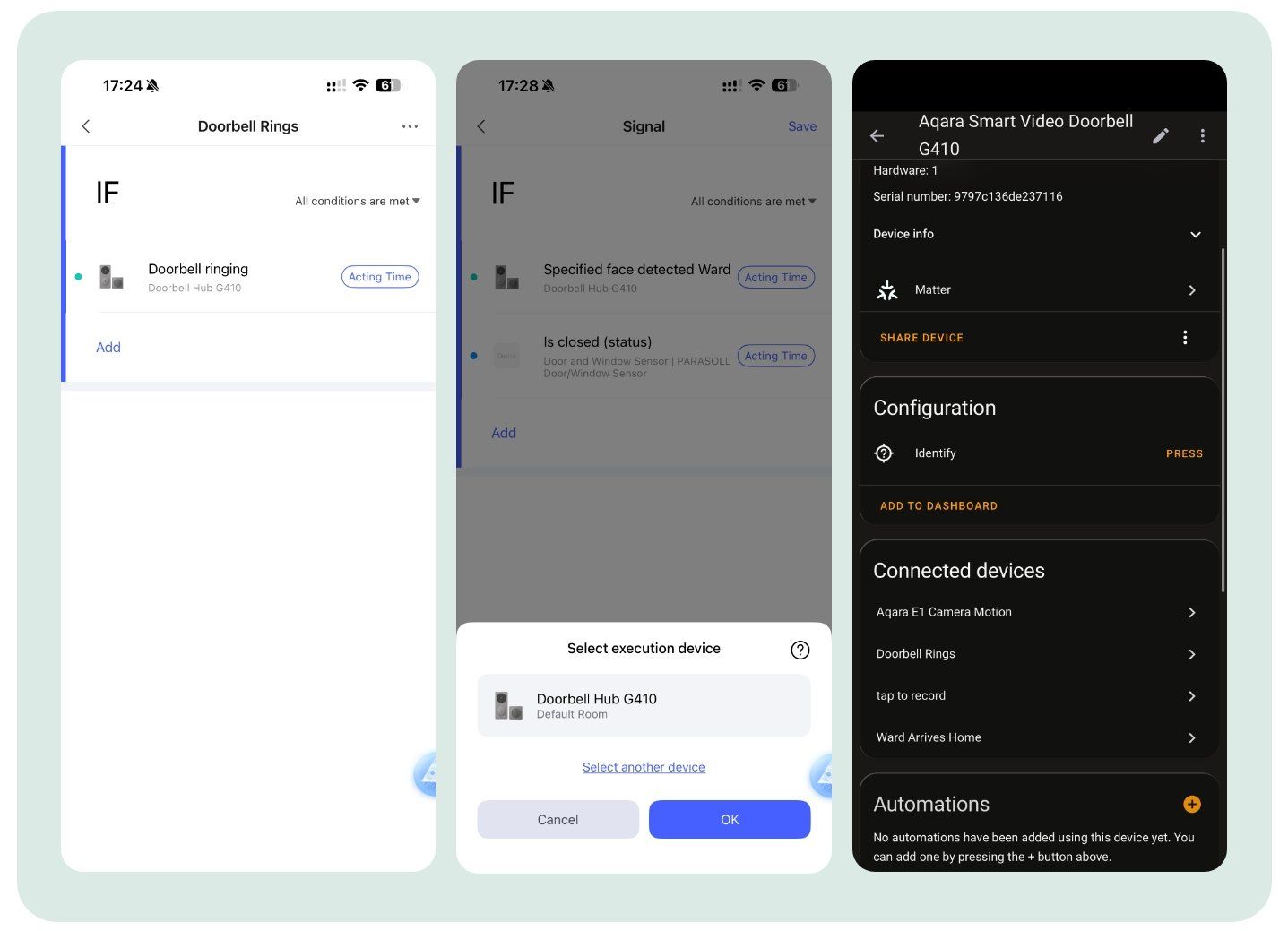
However, Aqara partially mitigates these limitations through its advanced “signal sync,” or virtual Matter devices, in plain words. These allow combining multiple sensor states into a single virtual sensor exposed to external Matter platforms, or vice versa. For example, FP2 sensor zones or specific Aqara sensor triggers can now be packaged into virtual sensors or switches and directly integrated into platforms such as Home Assistant, greatly enhancing flexibility and customizability.
The doorbell’s Thread Border Router resides inside the indoor chime, powered conveniently through USB-C. If connected first via an Apple HomeKit setup, Aqara’s Thread device automatically joins the existing Apple Thread network; Apple Home itself does not allow this process in reverse (Apple joining external Thread networks).
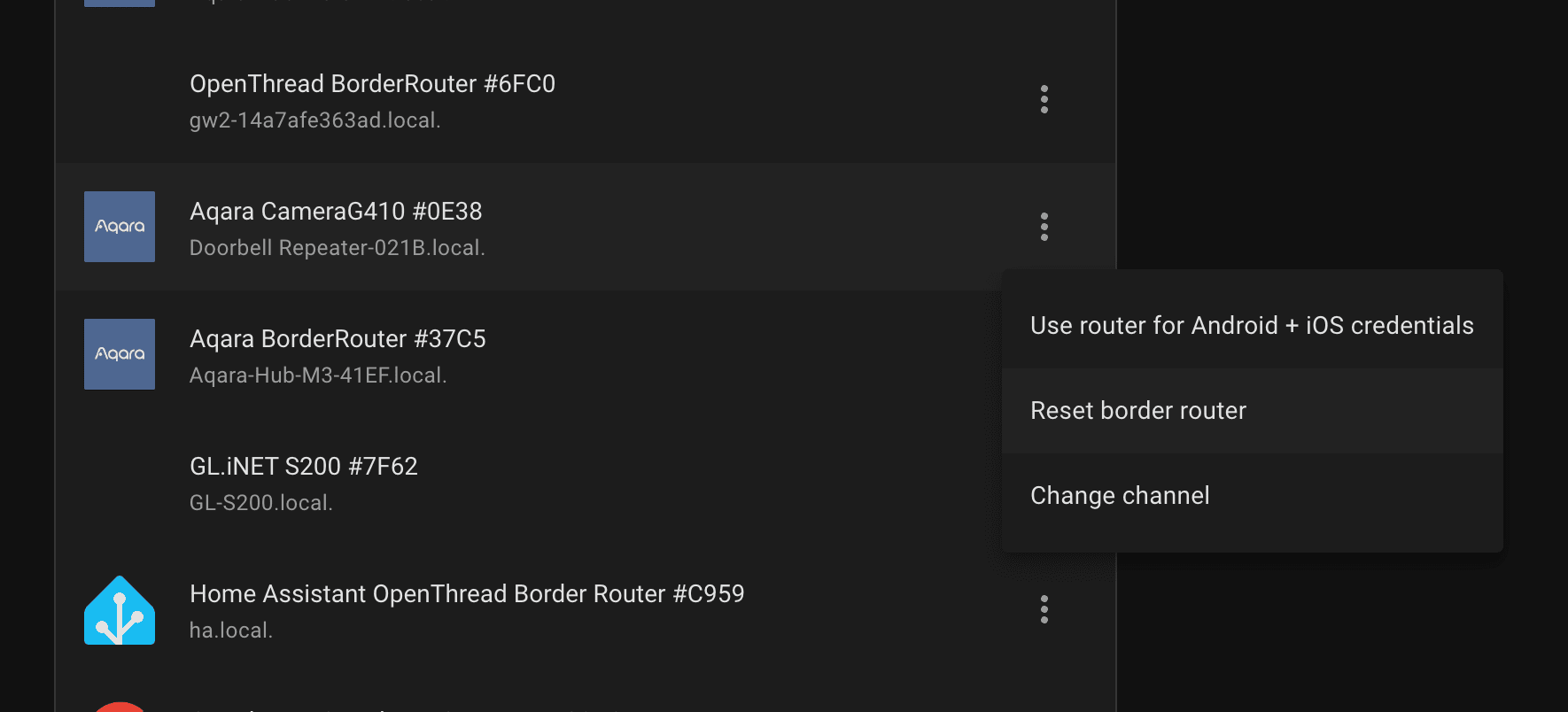
Power users will appreciate that the exposed REST API endpoint allows advanced integration into Home Assistant, letting users directly import and manage this Thread network. It’s even possible to issue specific commands, including creating new Thread networks, joining existing ones, or managing the Thread network channels via Home Assistant.
Final thoughts
The Aqara Doorbell G410 makes for a good addition to your smart-home setup, with Aqara’s extensive Matter ecosystem and versatile Thread infrastructure. It impresses with its thoughtful design choices, reliable streaming, accurate facial recognition, strong battery performance, and powerful built-in hub capabilities.
That said, the launch timing may be awkward for some users. The Connectivity Standards Alliance (CSA) is expected to announce upcoming standardized camera and doorbell integrations as part of the Matter 1.5 spec (expected toward the end of 2025). Aqara itself also has a substantial product line for Matter. So if you currently own a perfectly functional doorbell like G4 and can afford to wait until Aqara outlines its roadmap for new Matter device types, holding off may make sense. For those keen to promptly expand their Matter ecosystem right now, particularly around Aqara’s setup, the Doorbell G410 is a solid, fully recommended option.
Aqara Doorbell G410 is now available, priced at $129.99.
